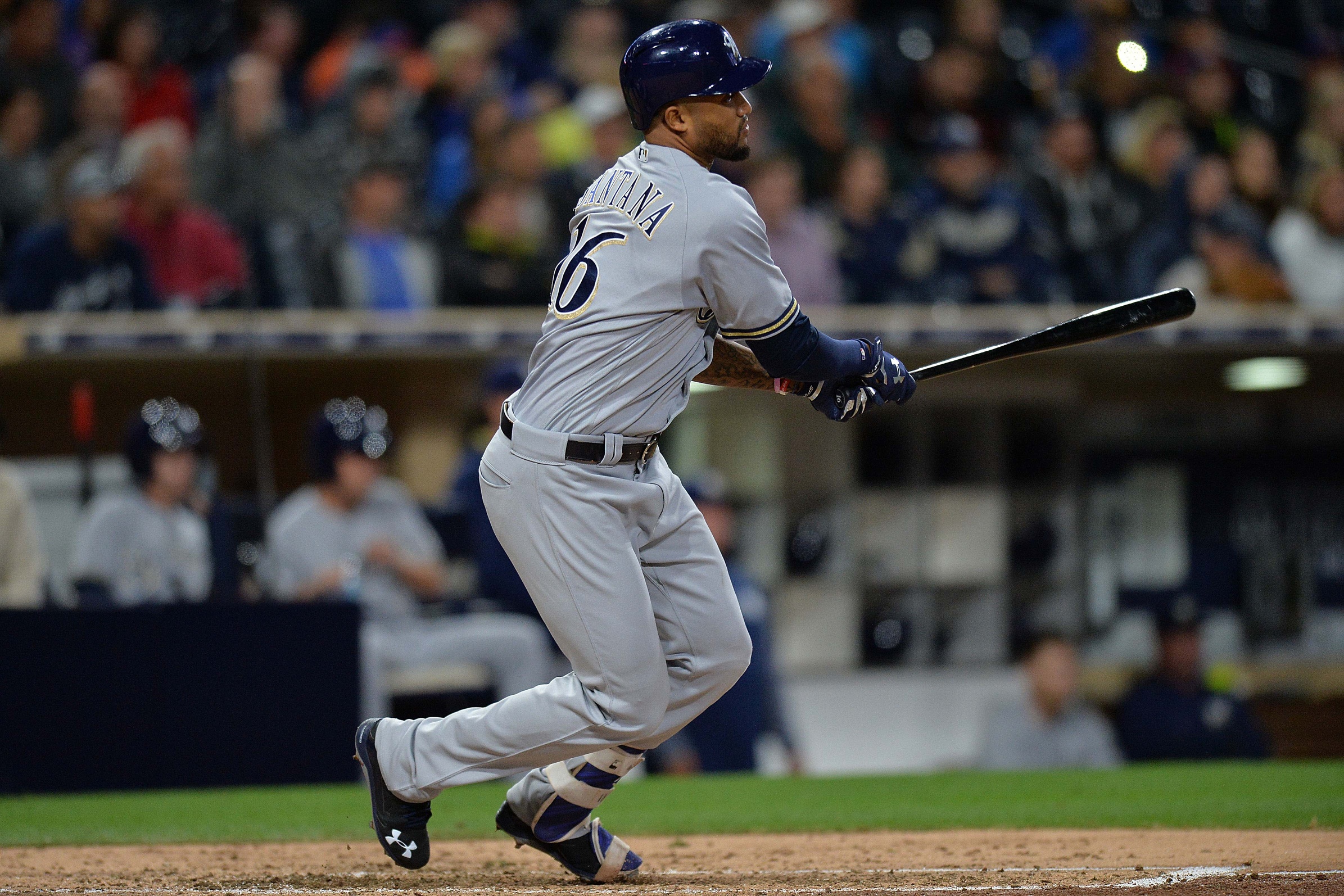The emergence of stars such as Eric Thames, Travis Shaw, and the two-headed catching monster that is Manny and the Jett have been instrumental in turning the 2017 Brewers into a feared offensive team. But across the board, Milwaukee’s everyday players have been replacement level or better, and this depth has been just as important in the team’s surge forward in the standings. Of the team’s position players, only Jonathan Villar and the departed Kirk Nieuwenhuis have been below replacement level this year, and neither of them has hurt the team any more significantly than a fifth of a win. Contrast that to last year when Alex Presley and Ramon Flores were each given over 100 at-bats despite the fact that neither of them did anything to warrant such lavish playing time.
Domingo Santana has not emerged as a star this year. Of the Brewers with 75 plate appearances or more, only Villar has been worth fewer wins so far. Santana’s defense, worth -15.5 FRAA as a Major Leaguer, holds down his value, and might mean that he eventually gets traded back to the American League, where he can be most valuable as a designated hitter. Despite the lack of overall impact, Santana’s offense has taken a major leap forward this season.
Santana is not hitting for more power. Santana’s .186 isolated power mark is one single point higher than his career mark of .185. But his .280 average represents a significant growth after he hit .231 and .256 for the Brewers in 2015 and 2016, respectively. Santana’s .359 BABIP might lead some to think that this is a fluke, and that he’s due for a painful correction back to the mean. But that number is probably pretty close to the mean for Santana, who, over 623 plate appearances in the Major Leagues, has posted a BABIP mark of .347. Furthermore, this is the same guy who paced all Class-AAA hitters in 2014 with a .408 mark in that category.
The narrative explaining this with Santana has always been that he hits the ball hard and runs hard. But Santana never stole more than a dozen bases in a season at any professional level, and coming into this season he was 6 of 10 on steals at the big-league level. And a look at his Statcast averages are even more curious. Santana’s not hitting the ball “hard,” he’s right in line with the league average:
Coming into this season, Santana’s elite exit velocity was what made him a potential sleeper to some. But so far this year, that hasn’t been there. What also hasn’t been there, however, and what might be more notable for its absence, is soft contact. Santana has only hit the ball softly 14.5 percent of the time this year, compared to a leaguewide average of 19.1 percent.
Santana hasn’t lost any power, but he’s cut back on his strikeouts considerably. Compared to his career strikeout rate of 32.7 percent, Santana has gone down on strikes 26.3 percent of the time this year. That’s still worse than the league average of 21.5 percent, but he’s trending in the right direction!
With that strikeout rate, Santana is a .280 hitter. His career True Average of .281 suggests that this isn’t an inflated rate given his skill. And Santana is just 24 years old. If he cuts his strikeouts back to a league-average rate, or even better, he’s going to threaten the .300 plateau every year, or maybe even leave it in the dust.
Speaking of being left in the dust, Santana has genuinely leveled up in regards to his speed on the basepaths. For one thing, he’s got four steals, good enough to match his career high, and it’s the middle of May. For all we know, that could just be a combination of good fortune and a sharp, opportunistic eye.
However, Jeff Zimmerman of FanGraphs analyzed home-to-first times the other day and found an interesting nugget of information: Santana has shaved more time off of his average home-to-first from 2016 to 2017 than any other major leaguer. On its own, home-to-first data doesn’t really say a whole lot. However, when one sees a drop in that number correspond with an increase in stolen-base proclivities, that causes one to say that the player in question is running faster than he used to.
Domingo Santana’s defense still holds him back as a complete player. But this year, by holding his excellent power while improving his contact skills and potentially upgrading his wheels, he has turned into a true all-around offensive threat. With that kind of weapon as the team’s “second-least valuable” player so far, it’s no wonder that the Brewers are holding steady in contention.

